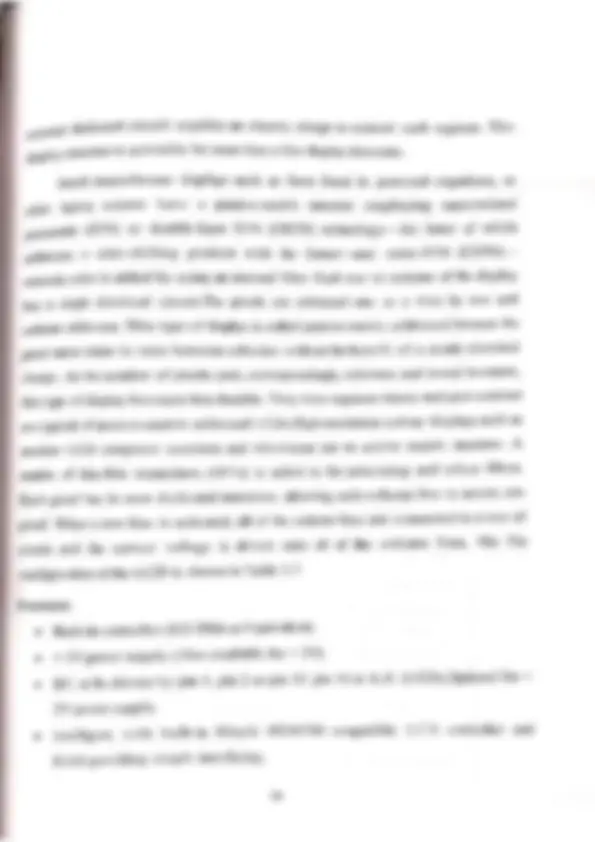Partial preview of the text
Download "Industrial Load Management System Using MQTT Protocol for Real-Time Energy Optimization " and more Thesis Industrial management in PDF only on Docsity!
y LCDs consuine much less power than LED and gas-display displays geohnolOP at F a, se they work on the principle of blocking light rather than emitting itAn LCD is pecs ith cither a passiv a thin film transistor (TET) display. The passive matrix LCD ide © matrix or an active matrix display grid, The active matrix mai LCD is also k grid of conductors W nown as or ith pixels located at each intersection in the grid. has # A current is sent across two conductors on the grid to control the light for any pixel. An active matrix has a transistor located at cach pixcl intersection. requiring Iss current to control the lu ve matrix display can be switched on and off more frequently. improving the minance of a pixel. For this reason, the current inan acti screen refresh time. Some passive matrix LCD's have dual scanning, meaning that grid twice with current in the same time that it took for one scan in the they scan the ) original technology. LCD display An LCD is a small low cost display. It is easy 10 interface with a micro- e of an embedded controller(the black blob on the back of the r technology. The LCD display is controller becaus board). However, active matrix is still a superio shown in Fig. 3.14. peppers atetsrotstelsbelsls) Fig. 3.14 LCD This controller is standard across many displays which means many micro- controllers have libraries that make displaying messages as easy as a single line of code.LCDs with a small number of segments, such as those used in digital watches and pocket calculators, have individual electrical contacts for cach segment. An 27 external dedicated circuit supplics an electric charge to control cach segment. This display structure is unwieldy for more than a few display elements. Small monochrome displays such as those found in personal organizers, or older laptop screens have a passive-matrix structure employing super-twisted pneumatic (STN) or double-layer STN (DSTN) technology—the latter of which addresses a color-shifting problem with the former—and color-STN (CSTN}— wherein color is added by using an internal filter. Each row or column of the display has a single electrical circuit.The pixels are addressed one at a time by row and column addresses. This type of display is called passive-matrix addressed because the pixel must retain its state between refreshes without the benefit of a steady electrical charge. As the number of pixels (and, correspondingly, columns and rows) increases, "this type of display becomes less feasible. Very slow response times and poor contrast _ are typical of passive-matrix addressed LCDs.High-resolution colour displays such as * modern LCD computer monitors and televisions use an active matrix structure. A matrix of thin-film transistors (TFTs) is added to the polarizing and colour filters. Each pixel has its own dedicated transistor, allowing each column Jine to access one pixel. When a row line is activated, all of the column lines are connccted to a row of pixels and the correct voltage is driven onto all of the column Jines. The Pin configuration of the LCD is shown in Table 3.7. Features e Built-in controler (KS 0066 or Equivalent). ¢ +5V power supply (Also available for + 3V). © B/L tobe driven by pin J, pin 2 or pin 15, pin 16 or AK (LED),Optional for + 3V power supply. © Intelligent. with built-in Hitachi HD44780 compatible LCD controller and RAM providing simple interfacing. 28 









